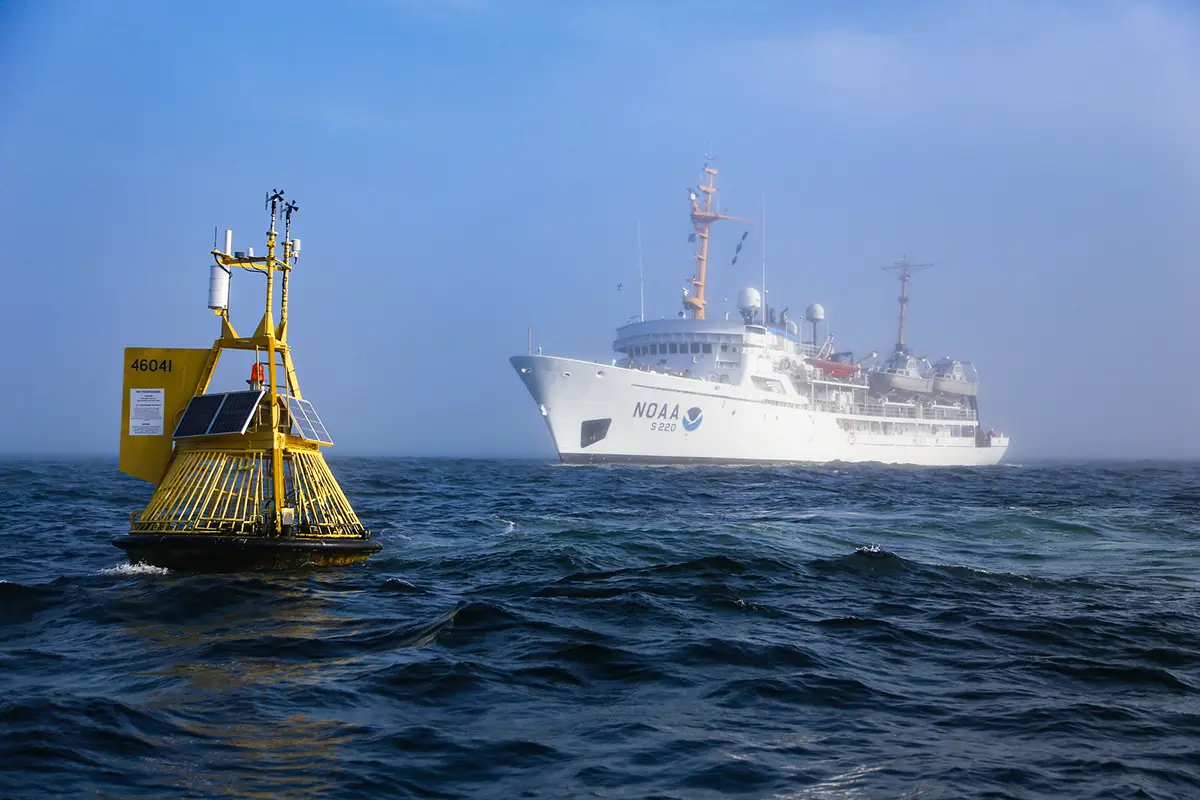An observing system optimization study for ocean acidification along the central and northern California
Why we care
Coastal waters in California Current System (CCS) are particularly exposed to ocean acidification risk, with upwelling causing increased acidity and lower oxygen. Marine life at the base of the productive food webs, such as pteropods and krill, and commercially and ecologically important fisheries species, such as Dungeness crab and red sea urchins are exposed to these conditions. While scientists have been measuring temperature and salinity for decades, routine observations for ocean acidification are relatively new. This study will assess the efficacy of monitoring assets in representing regional exposure to ocean acidification (OA). It will also identify opportunities to better capture changing ocean chemistry along the California coast.
What we will do
This project specifically investigates how the observing network is contributing to forecasting models using these complex tools to estimate ocean acidification conditions throughout the central CCS. Researchers will use non-data assimilative models to produce spatial maps of OA-related properties to identify geographical hotspots for monitoring. Next, they will evaluate existing statistical relationships from global datasets between commonly measured water properties like temperature and salinity with ocean acidification variables in the CCS. Furthermore, the team will determine the degree to which existing or future observation networks constrain the OA components of a coupled physical and biogeochemical (BGC) model. Lastly, the project will produce relevant OA metrics resulting from the current and potential future configurations of the observation network.
Benefits of our work
The data assimilative tools developed under this project will enable a rigorous formal quantification and assessment of the ocean acidification observing network. This work provides valuable data and information for targeted users and communities, especially those depending on marine life in the California Current Ecosystem for their livelihood. Information will be disseminated to these audiences through the Central and Northern California Ocean Observing System (CeNCOOS)—a group coordinating the delivery of information for decision making on resource management, as well as societal and economic issues.
Use the interactive online tool from this project to visualize conditions in the California Current System.
Investigators
Christopher Edwards, University of California, Santa Cruz
Jerome Fiechter, University of California, Santa Cruz
Kristy J. Kroeker, University of California, Santa Cruz
Andrew M. Moore, University of California, Santa Cruz
Andrea J. Fassbender, Monterrey Bay Aquarium Research Institute
Henry A. Ruhl, Monterrey Bay Aquarium Research Institute
Image: NOAA ship in background during the West Coast Ocean Acidification research cruise with a mooring measuring ocean chemistry. Credit: NOAA





